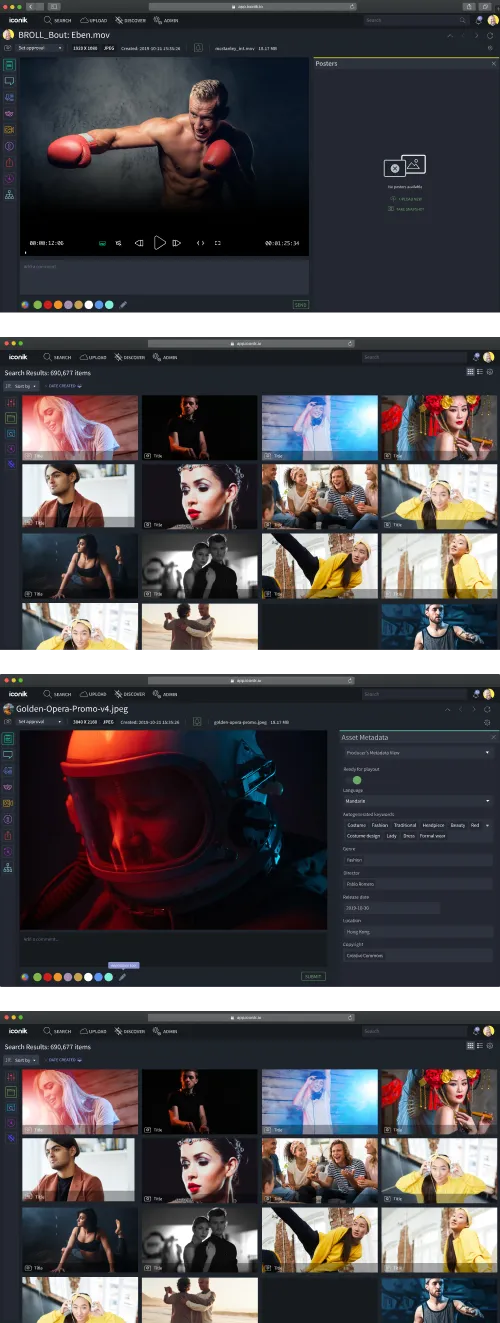If you’re still using a built-in file browser to manage media, it could be costing you more than you know.
As organizations grow, their media management strategy often struggles to keep up with expanding needs. Companies using standard file browsers often find it’s suddenly costing them significant time and frustration to make it work. As it becomes apparent that generic file browsers are not a manageable or realistic long-term solution, many companies begin to research alternative platforms, like dedicated media management systems.
Media Asset Management (MAM) solutions are the next step for companies looking for a storage system that can scale with them, offer more sophisticated ways of organizing their media assets, and improve accessibility and collaboration.
In this blog post, we'll look at the disadvantages of relying on built-in file browsers for media management and review the top 7 benefits of using a MAM solution.
Plus, we’ll give our top criteria for selecting the right MAM solution for your organization and tips on how to boost buy-in and increase user adoption.
What is a MAM?
A Media Asset Management (MAM) system is a software solution that stores, organizes, and catalogs media assets in one place. Sophisticated MAMs use metadata tags to organize the assets and offer advanced search possibilities.

What is a File Browser?
A file browser, also called a file manager, is a built-in, generic file and folder storage and management computer program. All desktop computers come equipped with a file browser. (E.g. - Microsoft’s File Explorer or MacOS’ Finder)

File Browsers vs MAM
There are many ways an organization will fall behind if it’s still relying on a file browser to manage a library of valuable media assets. The basic functions of a file browser simply can’t keep up with companies that need to securely store, organize, share, and collaborate on media files.
Relying on a File Browser Could Cost You
- Limited search and organization capabilities.
- No version control or collaboration features.
- Inefficient for large-scale media management.
- No dedicated metadata management.
Top 9 Reasons to Upgrade to a MAM
1. Save time searching.
Unlike a file browser, MAM solutions offer multiple ways to filter and search for media files, using metadata tags, time-based tags, and data added by artificial intelligence (AI). These capabilities save everyone using the MAM significant time on projects.
2. Better ROI for media assets.
Producing video and other rich media assets comes with a high price tag. When assets are lost, duplicated, or even just hard to find, the return on investment lowers significantly. Having a MAM in place ensures secure, quick, easy usage of valuable media assets. But more importantly, this will lower the cost of creating new content since creators will see all of the assets at their disposal.
3. Increased visibility with metadata management and AI tagging.
Instead of relying on file and folder names to locate assets in a file browser, a MAM can add and preserve metadata, effectively offering an endless number of data points to search. This data can range from creation dates, the user who uploaded it, and technical data such as geolocation and camera info. But it really becomes powerful when custom fields can be used with business-specific metadata such as names of product lines, campaigns, or specific parts of a media workflow. Adding metadata tags manually takes time, but more MAMs are equipped to auto-tag images and videos with visual AI. This can tag general themes, objects, colors, and even moods. AI transcription is also a powerful way to make every spoken phrase searchable in your MAM.
4. Cloud Accessibility brings more convenience.
In recent years, MAM technology has evolved to offer cloud-based accessibility for digital libraries providing the ability to access content from any device connected to the internet, while file browsers and older legacy MAMs tend to be linked to an on-premise server, meaning that the content can only be accessed if you are in the same location as the local storage.
5. Futureproof media organization.
No matter how meticulous a file system is organized, there will come a time when the folder structures are so deep and there are so many new people that it will become difficult to maintain. It isn’t scalable. As previously mentioned, cloud-based MAM solutions can expand or contract with user demands. This new approach to MAM allows users to consume more resources during a busy period, then scale down in the off-season. This elasticity of cloud-native solutions makes them great for business sustainability by limiting the number of unused resources.
6. More security to protect media assets.
A MAM provides user access control to enable admins to securely set and change access parameters for users or entire user groups as needed. A MAM ensures you can secure content with detailed roles and access rights, always safeguarding sensitive content. Security features like encryption, firewalls, intrusion detection, API logging, and password hashing are all ways to ensure a MAM has the highest level of security.
7. Easier collaboration.
Most media companies are working with both internal and external partners, collaborators and stakeholders—often located in different geographical areas. With a full media collaboration toolset, you can easily share files and assets with others, give feedback, track changes and revisions, and manage permissions all in one place. Choosing a MAM with built-in review and approval features will help everyone know which assets are approved for use. Plus, by centralizing conversations about media and projects in the MAM, you clean up all the lost communication spread through emails and messages in project management platforms.

Interested in a MAM but Not Sure Where to Start?
It can be overwhelming when starting your journey to find the right MAM. Before adopting any asset management solution, you must identify your team’s primary pain points. Then you can identify the features that meet your existing workflow requirements and choose a MAM software solution that offers the right functionalities.
Criteria to Consider When Choosing Media Management Solution
Be sure to ask the following questions when choosing a MAM.
What is the cost?
There are a lot of different MAM options available on the market, and it can be tough to decide which one is right for you. It's important to consider your budget when making a decision, as well as the features that each option offers. Some things to look for include fair billing practices and ease of scaling to fit your needs.
Will I get the support I need?
Make sure your MAM provider has a good reputation for customer service. See what their customers are saying about them. Another good way to assess this is to look at the documentation in the MAM’s knowledge base or help docs.
Can I get a free trial or proof of concept first?
There's only one way to know if a MAM is right for you, and that’s by getting hands-on experience. Look for MAMs that offer a proof of concept, allowing businesses to try out the solution before making an investment.
Can I configure this MAM for my own needs?
Ensure that the MAM solution you choose is flexible and configurable. It should allow you to customize the system to fit your specific business case without the need for expensive custom development.
What is iconik?
Iconik is Backlight’s cloud-native media management and collaboration platform that has put MAM technology within reach of companies of all sizes to help them manage their digital media assets.
There are no large setup costs or commitments required. Users can bring their existing cloud and on-premise storage to bypass long transfer times and have their new MAM set up within hours, offering the instant benefits of being able to find assets from anywhere in one place.
Interested to learn if iconik could be the right MAM solution for you?
Give iconik a try
Schedule a personalized iconik demo with one of our experts and start your free trial today.


Take the MAM Diagnostic Quiz
Need better media management?
Get tailored results to see where your biggest wins with iconik would be.
-Mar-05-2024-07-18-15-7861-PM-Mar-05-2024-09-56-24-4650-PM.png)